Thomas Hardy’s heroines are not victims of sexual anesthesia. Sue is quite defiant in her stating her sexual preferences and never hesitates to be vocal about it. What is unique about Hardy is that his mainstream heroines come close to becoming emancipated women, liberated both in thoughts and actions but towards the end, the writer himself becomes judgmental and bundles off the characters to suit the taste of the Victorian reading public. He somehow fails to fall in line with the feminism of his time. He seems to be empowering his women with the much coveted independence but his Eustacia, Bathsheba, Grace, Tess, Sue all ultimately conform to the moral codes specified by Victorian society. On the contrary, if we analyse the so-called minor women characters of his works, we will be surprised that these women, so neglected by their writer, are the iconoclasts of Victorian morality. Their feelings, their radical thoughts often make them an anathema to Victorian prudery. Mrs Felice Charmond, Suke Damson and Arabella Don deserve more than a cursory glance from their creator. Sriparna critically analyses Hardy’s heroines, and the novelist’s fallacy, in the light of feminism and empowerment, as special feature on the International Women’s Day (IWD), exclusively for Different Truths.
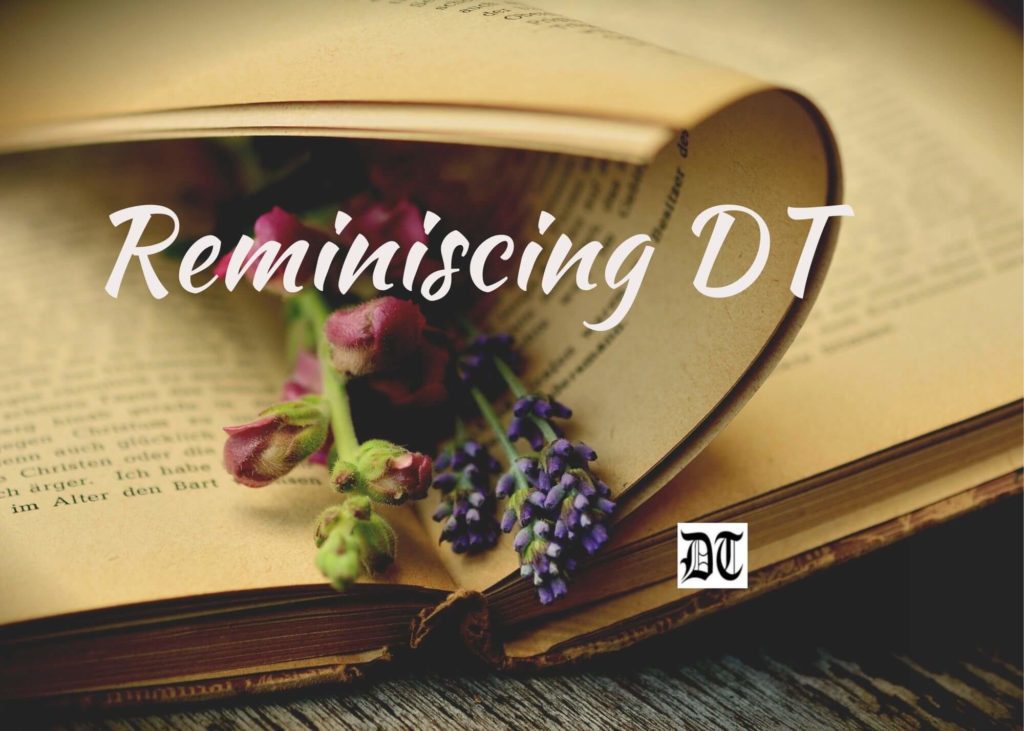
The Compact Oxford Dictionary Thesaurus and Wordpower Guide defines the term ‘empower’, the verb of empowerment, as “give authority or power to, give strength and confidence”. If the term ‘women empowerment’ is studied in this context then it would involve a play of power politics where one section of society, necessarily the women will try to subjugate and thereby dominate the other section, the men. It will involve women actively engaging themselves in different spheres like education, finance, society, law and becoming strong enough to challenge all codified conventionalities. Empowerment will also lead to a strengthening of the inner self as well as identification of the self and emerging as an individual who will be in total control not only of herself but also multiple aspects that affect the individual. This control will be both over the external impact factors as well as over the physical body. The term empowerment is now not just a term used by activists to rally behind different issues; it has now found its place in scholarly articles.
In academic literature, the term empowerment first was applied in reference to civil rights. One of the first articles that was written was in 1975 and was called “Towards Black Political Empowerment – Can the System be Transformed”,1 though this article was arguing for the empowerment of the black community it triggered off the use of the term in relation to other social issues. Empowerment came to be widely used in the context of women and their marginalized representation in society from the eighties and in 1983 Women’s Studies International Forum discussed empowerment of women in “Power and Empowerment”. Another interesting study in this respect is the paper written by Solava Ibrahim and Sabina Alkire entitled, Agency and Empowerment: A Proposal for Internationally Comparable Indicators. In this paper, Ibrahim and Alkire have identified thirty – two different definitions 2 of empowerment that are currently in use. “However most of the definitions define empowerment in terms of agency, an actor’s or group’s ability to make purposeful choices.” In another article called, Wellbeing, Agency and Freedom, 3 the writer concludes that empowerment is, in the end, a matter of personal choice. Even World Bank measured empowerment in their World Development Report by “the existence of choice, the use of choice and the achievement of choice.”4
Empowerment is now closely linked to feminism as the latter makes an attempt to study how women have been defined by society and liberate women from all forms of domination. Feminism as a stance, a political position can be differentiated from feminist theory. Feminism argues that the inequalities that exist between men and women are not natural but the consequence of a social imbalance. This imbalance has been created by multiple factors like religion, the family, and education. These social structures have confined women within a narrow framework and have made them believe that it is for the men to dominate the women. Feminist activists try to debunk this notion of patriarchy and believe that giving woman the power to choose would eventually make her a free individual. In a sense, she would be empowered with the freedom of choice. Feminist literary theory, in the words of Pramod K Nayar, “is the philosophical and analytical approach that employs this political position to read cultural practices like art or literature.”5 The feminist theory argues that the representation of women as weak, meek, docile, obedient, seductive, irrational or sentimental is rooted in actual social conditions where she plays no part and is treated as ‘the other’. She is a product of masculine construct and expected to be the ‘angel in the house’. Any aberration will lead to both social and moral degradation and cause damage beyond repair. Feminist literary theories see the cultural texts as power struggling between sexes.
The literary text is the battleground where actual power relations between men and women are played out. The problem happens to be that authorship itself is gendered. The language a woman uses to write a text is the patriarchal language and inherently sexist. The woman is forced to use this language as she knows no other language and the male language do not capture the woman’s soul. We can recall what Carl Jung said, “in each of us two powers preside, one male and the other female; and in the man’s brain the man predominates over the woman, and in the woman’s brain the woman predominates over the man. The normal and comfortable state of being is that when the two live in harmony together, spiritually cooperating….” 6
This ideal state as professed by Jung is not that easily achieved. If we look at the works of Thomas Hardy, we find that the writer is very much a product of patriarchal conventionalities. Though Hardy has been identified as a forerunner of the twentieth-century feminism his works reveal that the man was not able to break through the prejudices associated with women. In fact, Hardy’s women protagonists like Grace, Eustacia, Tess, Sue challenge their male counterparts only to the extent to which Victorian society allows them to. In the end, they prefer to be the shadow of their men-just the way Victorian morality wanted the ‘angel of the house’ to behave. Hardy’s works almost echoed the same feeling professed by Hopkins. Hopkins proclaimed that the essential quality of the artist was “masterly execution, which is a kind of a male gift, and especially marks off men from women, the beginning of one’s thought on paper, on verse, on whatever the matter is.”7That writing is essentially the male domain is voiced blatantly by the 20th century John Irwin – “writing is a kind of onanism… the use of the phallic pen on the pure space of the virgin paper.”8Hardy was very much a product of his age and his writings picture the gender debate of the Victorian society. Equipped with works like A Vindication of the Rights of Women by Mary Wollstonecraft and The Subjection of Women by J.S.Mill, the activists of nineteenth century demanded social equality for the marginalized women. As a consequence, the Victorian society was in turmoil and this has been well summarised by Kimberley Reynolds and Nicola Humble “For women, the Victorian period was anything but consistent. It began by inventing the fetishistic cult of the domestic angel and ended with the angels in bloomers, in offices, in higher education and driving motorcars.”9
Victorian literature was gradually conditioning itself to the changing pattern of society. While the condition of women became a social, political as well as a legal issue, fiction writers carried on the debate on their literary platforms. Very often these writers were received with scorn and their works were considered to be immoral and unfit for public reading. Strange though it might sound, the term New Woman was a reaction against those unconventional writers who propagated thoughts of women’s emancipation through their literary works. Ouida10 in an article, The New Woman, published in North American Review, in 1894, coined the term “the New Woman”. She adopted the phrase New Woman from Sarah Grand’s essay, The New Aspect of the Woman Question. Ouida was not at all sympathetic towards women’s struggle for emancipation and she allied the New Woman with the working man expostulating that both were “unmitigated bores, who meet us at every page of literature written in the English tongue.”11 Ouida used the term to refer to the those fictional women characters who were strong, self-willed individuals, believers in education and financial independence of women and who felt no moral restrains to express their thoughts before the public or in private. These women characters posed an antithesis to the typical fictional heroines of that time who were depicted in fictional writings as meek, docile and dependent on their male counterparts. According to Ann Ardis, the use of the term New Woman in the periodical press proved to be a kind of disaster for the late nineteenth century women’s movement. It was because of this coining of the term New Woman, the parameters of the debate on the ‘woman question’ narrowed down to mean only the New Woman novels and not the feminist movements that were gradually gaining popularity in the late nineteenth century. By separating these writers as New Woman novelists, segregation was made between the objectives of women’s struggle for liberation and the liberated heroines in the novel of that time. Both the novelists and the activists were protesting against the same denial of rights to women, only through different measures. It becomes clear then that by the term New Woman only a certain group of novelists was meant. The New Woman novels were those works of fiction where the heroines dared to question the separate rules laid out for them and demanded redressal. These fictional women were well versed with the writings of Mary Wollstonecrafts’s Vindication of the Rights of Women and considered Mill’s The Subjection of Women as their Bible. Throwing Victorian prudery to the winds, these novelists showed the double standards of society that had separate rules for men and women. They saw marriage as an institution of power politics, where the husband was the superior master and the wife was considered as an inferior being. The wife’s primary duty was to cater to the needs of her husband. These heroines believed that by educating themselves they could get financial independence. They wanted to free themselves from any kind of dominance – be it male dominance or dominance of the society. They rather preferred the path of free love or free association and did not suffer from any inhibition to express their natural desires. The heroines of the novels of Sarah Grand, Mona Caird, Olive Schreiner, and Grant Allen are some examples of the late nineteenth century women, who exhibited such radicalism in them. The literary productions of these novelists were not much appreciated by the public and their works were mainly condemned as unhealthy for general reading. Despite the fact that pro-feminist newspapers, like Shafts and Woman’s Signal, of the 1890s persistently gave voice to the New Woman’s concern for the betterment of women’s condition, periodical press like Punch and Yellow Book satirised, criticised, as well as ridiculed them. For example, Punch, in 1895, published a cartoon of the New Woman smoking and dressed like a man, discussing books, while the man of the house escapes to the servant’s hall for a cup of tea and gossip. Gossiping with the servants was thought to be the pass time of women, while men were engaged in more intellectual and literary pursuits. The New Woman’s desire to educate herself was also a matter of ridicule. Mrs. Linton declared that university girls, the epitome of the girl of the period, “All drink, smoke, swear, use vulgar language, and are represented as knowing and talking about unfitting subjects.”12 The image of the New Woman was an anathema to those who saw themselves as the guardians of conventional morality.
The Victorian men expected women to be meek and submissive and hide any feeling of passion they might have in them. It was indecorous of women to be vocal about their feelings. It was general feeling that a woman was an essentially sexless being. “The majority of women (happily for them) are not very much troubled with sexual feelings of any kind…. The best mothers, wives, and managers of households, know little or nothing of sexual indulgences. Love of home, children and domestic duties are the only passions theyfeel13.This denial of her sexuality almost became her identity and Victorian writers of fiction were constantly troubled by this threat of sensuality in their heroines. Lucy Snowe, the heroine of Charlotte Bronte’s novel Villette, took much effort in resisting the sexual import of the picture of Cleopatra. She stood before the picture and ruminated, “…the picture… represented a woman, considerably larger … than the life… She was, indeed, extremely well fed: very much butcher’s meat – to say nothing of bread, vegetables and liquids – must have consumed to attain that breadth and height, that wealth of muscle, that affluence of flesh. She lay half – reclined on a couch: why it would be difficult to say; broad daylight blazed around her; she appeared in hearty health, strong enough to do the work of two plain cooks; … she ought like wise to have worn decent garments; a gown covering her properly, which was not the case; out of the abundance of material – seven and twenty yards, … she managed to make insufficient raiment…14
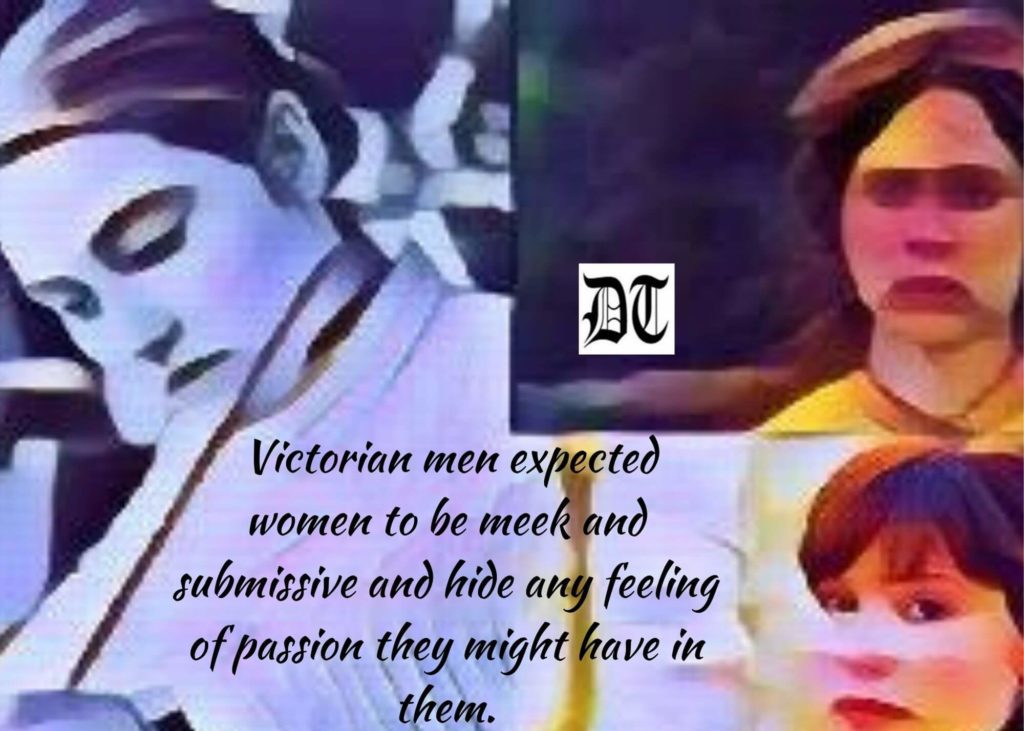
This proves that Lucy Snowe’s response to the portrait of Cleopatra is erotic in nature and Lucy’s Victorian ideology made her displace this eroticism to the domestic. As the sense of passion was considered to be of profound danger women constantly had to battle to free themselves from any sexual feeling. Havelock Ellis dubbed this rejection of passion ‘sexual anesthesia.15’
Hardy’s heroines are not victims of sexual anesthesia. Sue is quite defiant in her stating her sexual preferences and never hesitates to be vocal about it. In fact, Sue’s strong support of live-in relationship prompted a German reviewer to write that Sue was “The first delineation in fiction of the women, who was coming into notice in her thousands every year – the woman of the feminist movement – the slight, pale ‘bachelor’ girl – the intellectualised emancipated bundle of nerves that modern conditions were producing mainly in the cities as yet’ who does not recognise the necessity for most of her sex to follow marriage as a profession, and boast themselves as superior people because they are licensed to be loved on the premises” (Jude the Obscure, 1912 Preface). What is unique about Hardy is that his mainstream heroines come close to becoming emancipated women, liberated both in thoughts and actions but towards the end, the writer himself becomes judgmental and bundles off the characters to suit the taste of the Victorian reading public. He somehow fails to fall in line with the feminism of his time. He seems to be empowering his women with the much-coveted independence but his Eustacia, Bathsheba, Grace, Tess, Sue all ultimately conform to the moral codes specified by Victorian society. On the contrary, if we analyse the so-called minor women characters of his works, we will be surprised that these women, so neglected by their writer, are the iconoclasts of Victorian morality. Their feelings, their radical thoughts often make them an anathema to Victorian prudery. Mrs Felice Charmond, Suke Damson and Arabella Don deserve more than a cursory glance from their creator.
In his preface to the first edition of Jude the Obscure Thomas Hardy reminded his readers that the novel was also, “to tell, without a wincing of words, of a deadly war waged between flesh and spirit.” This might have prompted critics like Hawkins to consider Arabella as “Hardy’s symbol of the Flesh.”16 As a matter of fact, Arabella Don seemed to have failed to evoke much sympathy in the mind of the critics. While Sue was regarded to be the “representation of Jude’s intellectual and idealising nature, Arabella was seen as the representation of the strong impulse towards the earthly and the sensual which was also a part of Jude’s personality. Together they were “like the white and black horses, the noble and base instincts, which drew Plato’s chariot of the soul.”17 Except on some rare occasions, Hardy himself did not pass any direct comments about Arabella. However, unfortunately for Arabella those rare comments from her creator did not appear very flattering – “she was couplets and substantial female animal” (P.62). Again, when Jude thought, “Arabella was not worth a great deal as a specimen of womankind” (P.81), Hardy did not contradict.
Hardy quite often showed women distracting men from their higher purposes. Bathsheba’s whimsically sent valentine transformed Boldwood from a self-contained farmer into an almost insanely jealous suitor and eventually a murderer. Again, Viviette in Two on a Tower pulled down the gaze of the ambitious astronomer, Surthin St. Cleeve from the stars to herself. It was true that Arabella, too, by flinging her unconventional missile had distracted Jude from his goal. From Jude’s point of view, she was definitely a hitch to his aspirations. However, the fact remained that Jude failed to attain his goal mainly because of the system that had prevailed at Christminister. As Sue had explained that though Christminster was intended for persons like Jude who had a “passion for learning, but no money, or opportunities or friends, they were being elbowed off the pavement by the millionaire’s sons” (Jude the Obscure, p.170). If Boldwood had not met Bathsheba, in all probability, he might not have turned into a murderer. Likewise, if Cleeve had not met Viveette, he could have fulfilled his aim but, even if Jude had not met Arabella, it is difficult to believe, his aspirations would have been fulfilled.
Like most women of her class, Arabella did not receive any education nor was she qualified for any respectable job. To make matters worse, she did not have a very affectionate father. Like her companions, her only means of survival was through marriage. Marriage to her, in keeping with the ideas of her class, was a means to achieve economic stability. She had explained to Sue, “Life with a man is more business – likes after it (marriage) and money matters work better” (p.283). Her artificially designed dimples and phony switch of hair had irritated Jude and had promoted Carpenter to regard them as signs of her falsehood (p.146). But according to her code deceptions designed to entrap a husband, were legitimate enough. So much so that in her society to become pregnant before marriage was regarded as the “sure way to gain a man” (p.73) and it was accepted that, “Every woman had a right to do such as that. The risk is hers” (p.90). Therefore, the fact that she had taken recourse to this “sure way” should not lead us to consider her as the “black horse” of Plato’s chariot. Instead, it should be pointed out that had she not tried out the “sure way”, she would have lost Jude. For, after “some two months” Jude had decided to terminate the relation. “I am going away. I think I ought to go. I think it will be better both for you and for me. “(p.80)
Jude once bitterly remarked, “Arabella’s word was absolutely untrustworthy” (p.199). Now, Jude had sufficient reasons to feel that way. First, since his “life had nothing in common” with her “except locality” (.68), he could not regard her deceptions as accepted means to net husbands. Secondly, he had believed that Arabella had pretended pregnancy – a belief shared by Hawkins18, Walbank,19 and Williams.20 The point is she had not pretended pregnancy. The “itinerant” Vilbert confirmed her that she was pregnant (p.80). It turned out that the quack was wrong. In fact, except for her deceptions to catch a husband, she appeared to be honest (both to herself and to others) and straightforward. When they had first met she had unflinchingly declared to Jude, “There’s nobody after me just now, though there may be in a week or two” (p.64). To Anny and Sarah she had honestly confessed her desire for Jude:
In a few moments, Arabella replied in a curiously low, hungry tone of latent sensuousness: ‘I’ve got him to care for me; yes but I want him to more than care for me; I want him to have me; to marry me! I must have him. I can’t do without him. He’s the sort of man I long for. I shall go mad if I can’t give myself to him altogether (italic mine). I felt I should when I first saw him. (p.73)
Thus, we see that her aim to have Jude couched was not only in terms of economic advantages he might offer to her but the physical intensity was equally strong. Her passionate declaration ‘I shall go mad if I can’t give myself to him altogether’ showed how earnestly she longed for Jude.
Even while playfully flirting with Mr. Coclman she had remained honest – “Don’t you ask questions, and you won’t hear lies” (p.197). At Christminster she did not conceal to Jude that in Australia she had married the manager of the Sydney hotel (p.201). Again, in her letter to Jude she had honestly stated the reasons for having returned to the Australian – to improve “her circumstances” and lead a “genteel life” (p.209). After the death of her husband, she refused to be a “hypocrite” and to pretend not to have any “feelings” (p.326). She was, however, always on her guard to prevent her honesty from wrecking her marriage. At the “Great Wessex Agricultural show” she felt the urge to let Cartlett know that Father Time was her child. But that this news might cause problems to her married life, she had decided not to be “more candid than necessary” (p.303). Actually it was this fear that had also forced her to send Father Time to Jude, – “Cartlett might think him in the way” (p.287). Here it should be noted, at the inn at Alfredstoneshe had noticed that the beer was “Adulterated” and much to Jude’s surprise had, “mentioned three or four ingredients that she detected in the liquor beyond malt and hops” (p.170). No doubt, because of her experience as a barmaid at Aldbrickhan she had refrained from informing Jude, that before marriage she had worked as a barmaid. It might be that she felt that this news would diminish her chances of having him as her husband. We saw earlier that Sue too had concealed certain facts from her husband. She concealed the fact that Jude kissed her on the morning after her marriage; Arabella did not keep anything secret from Jude. She herself had informed him of her previous profession; (p.82) and boldly acknowledged that she took recourse to the “sure way” to gain a husband. (p.90) Phillotson, however, never came to know about his “sweet” wife’s secrets. Likewise, Dick remained ignorant about his “frank” wife’s secrets. At heart Arabella was honest. Her letter to Jude informing him of her marriage to Cartlett and her wish to leave her son with Jude revealed her integrity of character. There was no show of any excess of emotion:
He is lawfully yours that I solemnly swear … I was honest from the time we were married till I went away, and I remain yours, & C – Arabella Cartlett
Her intention to keep her son with Jude did not make her an opportunist rather it showed her eagerness to make her marriage with Cartlett successful. As against this loyalty and integrity of character, if we look at Lucetta’s letter to Henchard in The Mayor of Casterbridge we would be struck by the ornateness of her character:
… I quite forgive you for landing me in such a dilemma… may I request you to return to me any such you may have, particularly the letters written in the first abandonment of feeling.21The intellectual approach to Lucetta’s letter profoundly brings out the simplicity and honesty in Arabella. She used deceptions and concealments either to gain a husband or to prevent her marriage from breaking. Sally Ledger compared Arabella with TantSannie, the Boer woman in The Story of an African Farm. Ledger wrote: “A truly repulsive specimen of humanity – cruel and ignorant, as well as bloated and overfed – TantSannie can be compared with Thomas Hardy’s Arabella Fawley, in Jude the Obscure, whose degeneracy does not prevent her from being the ablest survivor in the novel. TantSannie, like Arabella, consumes men and thrives on them”.22
This remark did not flatter Arabella in any way; on the other hand it served to bring out the grotesque in her. However, it is true that Arabella did not possess the tender sentiments of either Jude or Sue. To her, Jude remained a “tender fool” because of the sympathy he had shown to “woman in trouble, birds and things” (p.283). But, then she lived in a world where sentiment was regarded as luxury – a luxury that she could not afford. To her pigs were only a means of survival, not animals to which she could show sympathy. Hence, she had instructed Jude to let the pig “did slow”. For, the “meat must be well bred” or else, they would, “lose a shilling a score if the meat was red and bloody” (p.87). She knew that “poor must live” (P.88) and to live they had to be ruthless. Her world had taught her that materialistic gains were well above sentiments and tender feelings. It was a lesson if unlearned would lead to starvation. She could not appreciate Phillotson’s decision to divorce Sue. Arabella’s pragmatic self forced her to observe that through this divorce, “you lost your school and good income”. (p.327).
She loved Jude. Even Hardy noticed it, “The lines of her countenance changed from the rigidity of business to the softness of love when she saw Jude” (p.75). But to her love, as she told Anny, was not as Sue understood (p.305). To her love was a prelude to marriage. Unlike Sue she never feared that marriage would thwart love. Her love was not platonic. It was very much materialistic. Economic considerations played a vital part and sex was not barred entry. Immediately, after her first encounter with Jude, her friends had warmed her, “he’s nobody, thought you med think so” (p.65). Yet she had “wanted” Jude. It was not that her love for him had made her impractical. For, it is hard to believe that she was unaware or had not taken into consideration Jude’s economic hardships – being a “stonemason’s apprentice, nineteen years of age, was working for half wages till he should be out of his time” (p.81). It is only that she trusted in him and was confident that as a husband Jude had a “lot of earning power in him for buying her frocks and hat when he should begin to … stick to his trade, and throw aside those stupid books for a practical undertaking” (p.82). She married Jude twice. Unfortunately, on both occasions Jude failed to do justice to her confidence in him. He failed to provide the economic security that she was aiming at through her marriage. The first occasion was that he possessed “those stupid books” and impractical dreams and the second occasion was his ill health. At the “Great Wessex Agricultural show,” she had confessed to Anny that she “ought to ha’ struck to him” (P.305). One reason for her to feel that way was her realisation that Jude by then had given away his impractical dreams and thereby had improved his chances of providing economic security. The other reason might be that she had a soft comer for him. Though Jude had failed in her estimation, she had retained a weakness for him. It was because of this tender feeling for him that she had gone to the station to receive Jude on his return from Marrygreen, though she knew that he went there to meet Sue. (p.397). It is true that during their married life, she had often insulted him. Her insults can, however, be explained as mere expressions of her frustrations for having failed to achieve economic security through her m marriage with him.
In her love, as we noted earlier, sex was a vital ingredient and we see her sexually stirred. She never felt embarrassed for it. On her way back from Alfredstone with Jude, she did not feel embarrassed to wish that he “put his arm round her waist” (p.70). However, she was not promiscuous. Even after “having lived in a town” before marriage, she had, in all probabilities retained her virginity. For, she believed that the “right way” of “catching” a man was by “plain courting and taking care he didn’t go too far” (p.73). In fact, Sarah and Anny had to teach her the “sure way to gain a man” (p.73). It is true that she had outrageously flirted with Vilbert. But through her flirtation, she was only providing “for a rainy day”. For, her pragmatic self had reminded her that, “Weak woman must provide for a rainy day. And if my poor fellow upstairs do go off so I suppose he will soon- it’s well to keep chances open. And I can’t pick and choose now as I could when I was younger. And one must take the old if one can’t get the young”.
After having seen Sue at the spring fair at Kennet-bridge, she had strongly desired to re-marry Jude. Various reasons could be attributed for this desire. One reason is that her Australian husband was dead. The second reason is that way back at Stoke Barehills she realized that Jude, having given up his dreams, was capable of providing economic security. The final one is that she did not realize the seriousness of his illness. After her marriage, she accused Jude of “deceiving” her by having given the impression that he was physically fit to carry out the duties of a husband. (p.390). In spite of her desire to get Jude back into her life she refrained from being instrumental for the break-up between Jude and Sue. When she next met Jude she maintained a “stereotyped manner of strict good breeding” even when left alone with him (p.357). It might be that because of her information that at the time of divorce Sue did not have any sexual relation with Jude Phillotson did forgave Sue. Sue would have left Jude because she viewed her relationship with Jude as “sinful” and not because of Philltson’s readiness to take her back. This realization that Arabella was not in any way responsible for the break-up, leads us to infer that she was not vicious or vindictive. It is true that she was acutely conscious of her well-being. For the sake of her own well-being, she did not hurt Sue by taking Jude away from her. She had maneuvered Jude back to her bed only when Sue had left him and when she herself was in a very difficult position-“I am lonely, destitute and houseless….Father had turned me out of doors after borrowing every penny I’d got… If you can’t take me and help me, Jude, I must go to the workhouse, or to something worse”. (p.377)
As a matter of fact, time and again Arabella proved the aptness of this remark. She had rightly assessed that visit to Jude at Aldbrickhan had brought Sue and Jude close to one another (p.282). Arabella had enough intelligence to realise that Sue, “never found peace since she left his arms, and never will again till she’s as he is now” (p.413). This close look at Arabella prevents us from agreeing with Hawkins that she was indeed a “personification” of that “unvoiced call of women to man” or approving Alvarez’s assessment of her- she represented the “base instincts” in Jude. Nor does she appear to be what Hardy thought of her, “a complete and substantial female animal”. Instead, she appears to be a human being — a woman who was conscious of her wellbeing but not vicious and vindictive, a woman who was worldly wise, who was neither sexless nor a pervert, who was honest at heart; and was in tune with her society. Like Arabella, Herminie, Gallia, Jessamine, Evadne and such other New Woman heroines are honest and frank. Again, like Arabella they are not sexually pervert or vicious. But in New woman fictions, such characters were always idealised. Thomas Hardy failed to sympathise with Arabella and subsequently never took the trouble to understand her. It is very interesting to see that Hardy disapproved of Arabella’s honest confessions of her physical desire for a man. In the New Woman novels the heroines openly acknowledged their physical yearnings without any reservation because they felt it was something very natural. In fact the Victorian reader objected to this freedom of thought and condemned them as something seriously wrong. Hardy in his rejection of Arabella went against the basic features of New Woman novels, i.e. freedom of expression. D.H. Lawrence admired Arabella. He said that “Arabell was, under all her disguise of pig – fat and false hair, and vulgar speech, in character somewhat an aristocrat. She was, like Eustacia, amazingly lawless, even splendidly so. She believed in herself and she was not altered by any outside opinion (italics mine) of herself”.23
What Lawrence meant by ‘outside opinion’ was society’s estimate of Arabella. She never compromised her desires and beliefs for society – Grace, Tess or Sue would never do something like this. To quote from Lawrence Grace, Tess and Sue “… were all cowed by the mere judgment of man upon them, and all the while by their own souls they were right.”24 In their tragedy the “social code worked out … (their)… irrevocable fate.”25
It might be worthwhile to recall that on the Sunday afternoon when Arabella and Jude entered the inn at Alfredstone, the first thing they noticed was the “picture of Samson and Delilah which hung on the wall” (p.70). By taking note of the picture when Arabella and Jude were together for the first time Hardy seemed to emphasize his point of view -Arabella is the eternal Delilah and Jude the Samson. While dealing with Arabella Hardy thoroughly adhered to the age-old prejudices against the seductress, she was the daughter of Eve who embodied sexual enticement. It goes without saying that such an attitude distanced Hardy from the New Woman novelists.
It is very surprising that recent feminist criticism did not give much attention to Arabella. Margaret Higonnet’s well-received 1993 collection The Sense of Sex: Feminist Perspectives on Hardy made only a passing reference to Arabella.26 Marjorie Garson considered Arabella as a “castrating woman… the last in the long line of wicked temptress.”27 Rosemarie Morgan in Woman and Sexuality saw Arabella as Hardy’s textual auxiliary in the “process of reading Sue right.”28 All these show that even feminist criticism shared Hardy’s opinion regarding Arabella.
However, the importance of Arabella could be summed up in the words of Peter Widdowson who commented on Arabella in On Thomas Hardy –Later Essays and Earlier:
“What Jude as ‘character’ does do, however, is act as a device for focusing the injustice of social institutions, which govern his life. Equally, Sue is not built on tragic scale, but rather, as many recent (feminist and other) critics have pointed out, represents a deadly ‘delineation’ – whether misogynist or not – of the ‘New Woman’: a kind of feminized Angel Clare. But if we turn finally to the novel’s third protagonist, Arabella, we find a more dynamic and instrumental figure in the satire. No one ever claims that Arabella is tragic, her tartly dimpled animalism being the stuff of which tragedy is made: but we should not fail to recognize that it is her continual appearances throughout the text which centrally drive the plot along, and also, as we shall see, that it is she who concludes it.”29
Basudeb Chakraborti in his work, Thomas Hardy’s Views on Happiness: A Study of his Major Novels and Short Stories, writes that the egoistic man suffered because “… society never allows him to lead his life according to the promptings of his intuitive desire.”30 Those characters in Hardy’s novels attain happiness who are able to move into an altruistic domain. These characters suffered from egotism but in the course of their various experiences, they realise that “a man requires to regulate his life by following certain social norms and values.”31Chakraborti holds the opinion that in the major novels of Hardy –“… the pivotal characters … undergo a clear change from self – seeking to deep concern for others. The characters in these (major) novels at the beginning are determined to lead their lives, inspired by their intuitive will; they hardly care for the norms and values of society to which they belong. They allow their self – seeking motives to have a dominant role in determining their choice and individual behaviour in the definite social context. But during the course of the novels, they are subjugated by the social environment in which they breathe and grow. And finally they eschew their free will, their impulses and even their intense craving for being happy in their lives. … They accept and accommodate facts of life they used to disown formerly.32
The passage quoted above might help us understand why Hardy did not sympathise with characters like Suke, Mrs. Charmond and Arbella. Grace, Tess and Sue all go through this process of self-sacrifice – they are made to sacrifice their independence, individualism and are made to follow the dictates of society. In the words of Chakraborti, “They eschew their free will, their impulses and even their intense craving for being happy in their lives.”33 Hardy was forced to make these characters go through this self-annihilation so that the moral of the Victorian society would not be hurt. On the other hand, characters like Suke, Mrs. Charmond and Arabella gave primary importance to their own happiness. They refused to attain that ‘altruistic’ end that would give satisfaction to others. Even Hardy did not waste any extra comment on them. They remain the essential ‘bad women’ of Victorian fiction who had yet to learn the most important lesson of womanhood – self-sacrifice.
Much of what we today term as women empowerment and feminism had their genesis in the nineteenth century. What remains to be said is that empowering women to become independent and much more participative in different fields is now government propaganda. Reservation policies and change in law help women to be included in the decision making process of any country. However literature is not just activism. Literature encompasses not just the politics, economics and social parameters of an age but also effectively looks into the mental construct of any era. The Victorian period witnessed too much of turmoil as far as political activism was concerned. Much of it got reflected into the literature of the age where writers, both male and female, came forward with their thoughts on this debate. While one group labeled the ‘New Woman’ got branded anti-moralists (as their writings gave women the scope to explore their passions and feelings) writers like Hardy preferred to maintain a duality. He gave his women protagonists the freedom of choice as long as it did not hurt the prevalent sentiment of his time. Feminism that is pro empowerment has to be a condition not only of society but also of literature. If progression is law of nature then to quote Kofi Annan “There is no tool for development more effective than the empowerment of women.”
References
‘Towards Black Political Empowerment – Can system be Transformed’ by J Conyers in Black Scholar, 1975
‘Agency and Empowerment: a proposal for internationally comparable indicators’ by S Ibrahim and S Alkire in Oxford Development Studies, 2007, p. 6
‘Wellbeing, Agency and Freedom’ by A.K. Sen, The Journal of Philosophy LXXXII, 1985
World Development Report 2001: Attacking Poverty from the World Bank, 2001
‘Contemporary Literary and Cultural Theory – From Structuralism to Ecocriticism’ by Pramod K. Nayar, Pearson Education, 2010, p. 83
Ibid., p.87
Newsletter ‘Pen and Mouse’, 1994, www.ruthnestvold.com
Newsletter ‘Pen and Mouse’, 1994, www.ruthnestvold.com
‘Victorian Heroines – Representations of Femininity in Nineteenth Century Literature and Art’ by Kimberley Reynolds and Nicola Humble, p.4.
Ouida took this term New Woman from Sarah Grand’s essay “The New Aspect of the Woman Question”, published in 1894 in North American Review. Ouida in her essay “The New Woman”, also published in the North American Review in 1894, referred to novelists who portrayed unconventional heroines in their writings – these heroines were educated, wanted financial independence, saw marriage as the biggest hindrance in their path to freedom, had no reservations regarding free love and shocked readers with their iconoclastic views. Some of the New Women heroines were Herminia Barton (The Woman Who Did), Hadria Fullerton (The Daughters of Danaus), Evadne (The Heavenly Twins), Lyndall (The Story of an African Farm).
‘The New Woman: Fiction and feminism at the fin de siecle’ by Sally Ledger (U.K: Manchester University Press, 1997), p. 35.
Victorian Heroines – Representations of Femininity in Nineteenth Century Literature and Art by Kimberley Reynolds and Nicola Humble, p.22.
William Acton, cited in Kimberley Reynolds and Nicola Humble, Representations of Femininity in Nineteenth Century Literature and Art, p.13.
Ibid., p. 10.
Havelock Ellis, Studies in the Psychology of Sex, (Philadelphia: F.A. Davies Co., 1913), 193.Ellis said that the passion that women felt had to be fought with a lot of physical and psychological effort. They tried to keep dormant their sexual passions. In the very effort of doing so Victorian women showed how much they thought about the natural physical desire.
‘Hardy: Novelist and Poet’, by Desmond Hawkins, London, Macmillan, 1976, p. 154
‘Thomas Hardy’ in the English Novel from Dickens to Lawrence’, by Williams, Raymond, London: Chatto and Windus, 1984, p.156
‘Hardy: Novelist and Poet’, by Desmond Hawkins, p. 156
‘Thomas Hardy’ by Christopher Walbank, London, Macmillan, 1978, p.112.
Richard Carpenter, p.145
Thomas Hardy, The Mayor of Casterbridge, pp. 122 – 3
Sally Ledger, The New Woman – Fiction and Feminism at the fin de siècle, p.80.
Robert Langbaum, Thomas Hardy in Our Time, p. 23.
Ibid., p. 24
Ibid., p. 25.
‘On Thomas Hardy – Later Essays and Earlier’,by Peter Widdowson, London: Macmillan, 1998, p. 180
Ibid., p. 180.
Ibid. p. 180 – 1.
Ibid., p. 181.
‘Thomas Hardy’s View of Happiness: A Study of His Major Novels and Short Stories’, by Basudeb Chakraborti, Calcutta: Minerva Associates Publications Pvt. Ltd., 1997, p.93
Ibid., p. 93.
Ibid., p. 93.
Ibid., p. 93 – 4.
Picture design by Anumita Roy, Different Truths

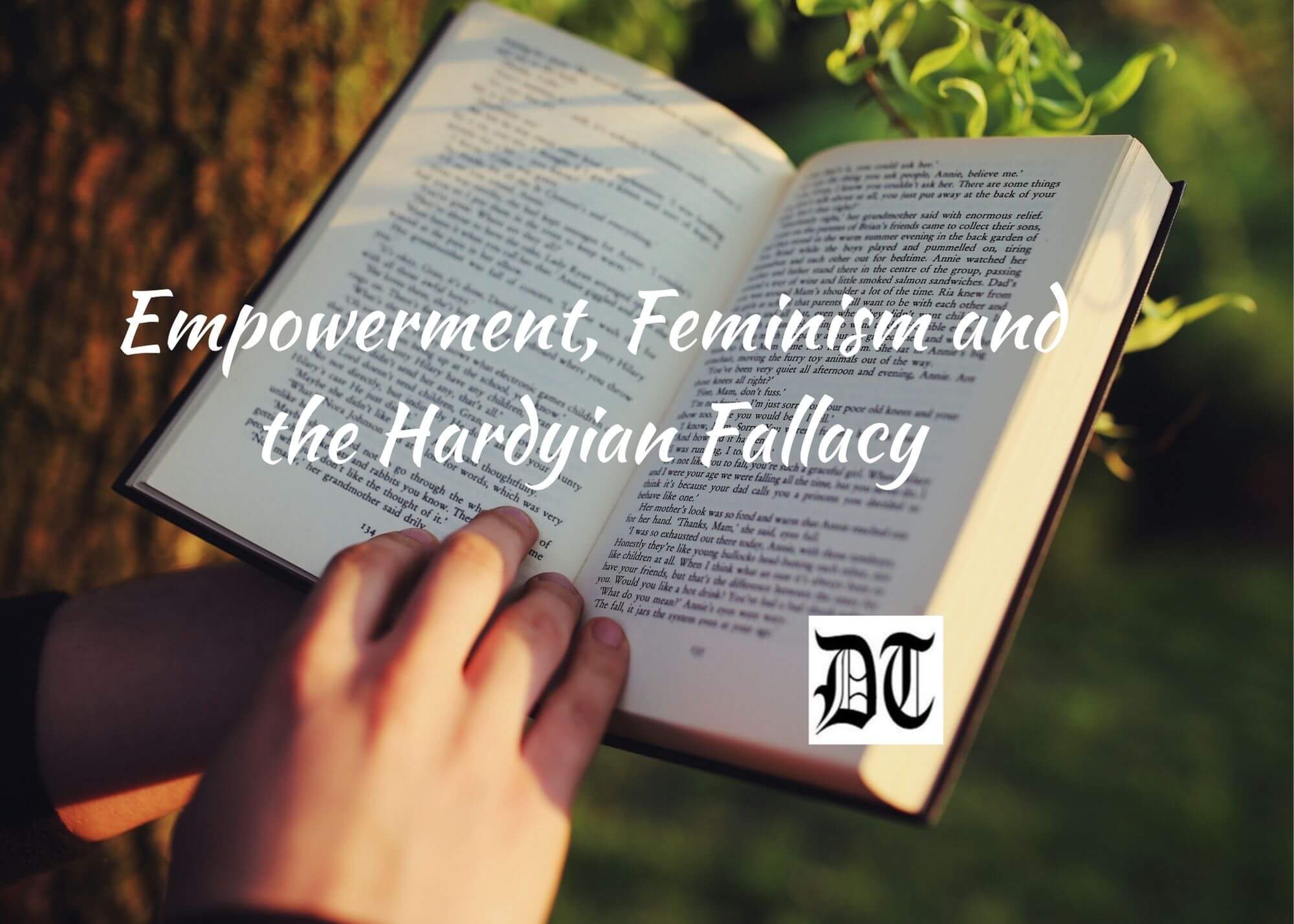
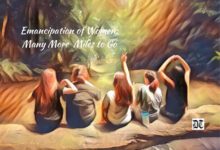



 By
By
 By
By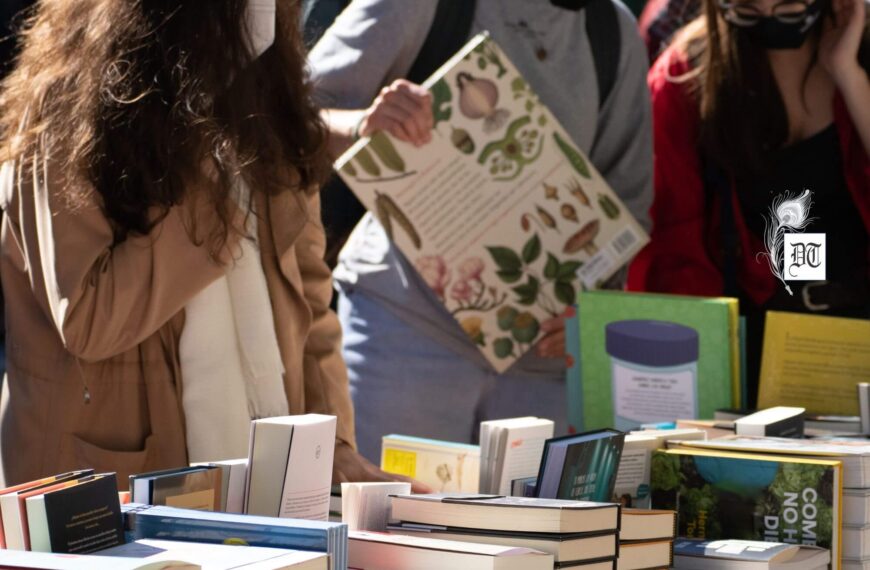
 By
By